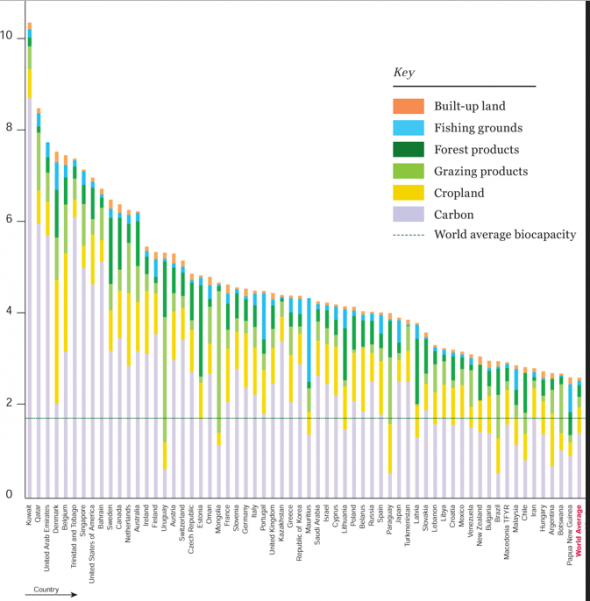The world populations of fish, birds, mammals, amphibians and reptiles fell overall by 52 per cent between 1970 and 2010.
According to World Wildlife Fund’s tenth Living Planet Report humankind’s demands are now 50 per cent more than nature can bear.
To gauge the variations between different countries’ environmental impact, the report measured how big an “ecological footprint” each one had and how much productive land and water area, or “biocapacity”, each country accounted for.
The report ranks Australia as having the 13th largest Ecological Footprint per capita, out of the 152 countries included in the study.
If the rest of the world lived like Australians, we’d need 3.6 planet Earths to sustain our total demands on nature.
The report shows that the biggest threat to biodiversity comes from the combined impacts of habitat loss and degradation. Fishing and hunting are also significant threats. Climate change is becoming increasingly worrisome, with research cited in the report finding that climate change is already responsible for the possible extinction of species.
The report also measured how close the planet is to nine so-called “planetary boundaries”, thresholds of “potentially catastrophic changes to life as we know it”. Three such thresholds have already been crossed – biodiversity, carbon dioxide levels and nitrogen pollution from fertilisers. Two more were in danger of being breached – ocean acidification and phosphorus levels in freshwater.
Re-post of:
